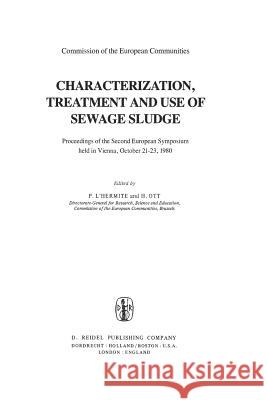Characterization, Treatment and Use of Sewage Sludge: Proceedings of the Second European Symposium Held in Vienna, October 21-23, 1980 » książka
Characterization, Treatment and Use of Sewage Sludge: Proceedings of the Second European Symposium Held in Vienna, October 21-23, 1980
ISBN-13: 9789400985087 / Angielski / Miękka / 2011 / 804 str.
Characterization, Treatment and Use of Sewage Sludge: Proceedings of the Second European Symposium Held in Vienna, October 21-23, 1980
ISBN-13: 9789400985087 / Angielski / Miękka / 2011 / 804 str.
(netto: 768,56 VAT: 5%)
Najniższa cena z 30 dni: 771,08
ok. 22 dni roboczych.
Darmowa dostawa!
The object of sludge characterization must be to get quantitative mea- sures for sludge behaviour in treatment processes and when disposed of. Thus the incentive for characterization could be one of the following: 1. Because sludges exist in large quantities we want to know the amounts and the expenees involved in their treatment and disposal. 2. Because sludges are environmental nuicances/hazards, energy sourc:-es, fertilizers or even food sources; we want to know their potential. 3. Because the processes change the sludge propert~es, we w~nt to know their "treatability". 4. 5ecause sludges have a history, we want to know how the generation process affects the quantities and the properties of raw sludge. Parallel to the characterization of the sludges runs characterization of the sludge treatment-processes and the environment in which we dispose of the sludge. In the following discussion we will group parameters related to sludges into three cathegories: 1. Sludge Quantity. Both total ~nd per capita sludge production data from all connnon sewage and sludge treatment methods are of "interest. 2. Treatability parameters. These are characteristics of how a sludge behaves in a specific process. Typically; dewaterability and digesta- bility. 3. Sludge quality parameters. These are indicators of how the sludge could influence the environment when disposed of. Sludge quality changes through most sludge treatment processes (stabilization, ther- mal etc.) and include concentrations of chemical compounds, pathogenes etc.











